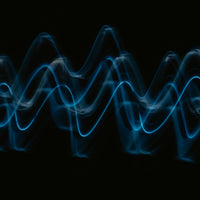I’m a little late to the party, but I just heard about non-sleep deep rest (NSDR). I roll with the type of crowd that commonly chats about breathwork, microdosing psychedelics or cold plunging, so I was a little surprised that I learned about NSDR from a website and not a friend. Were they holding out on me? Or is NSDR just a fad? I decided to dig in and find out for myself.
Aptly named, NSDR is a way to rest without actually sleeping. You may have heard about it from Andrew Huberman, Ph.D., professor in the Department of Neurobiology at Stanford University’s School of Medicine and host of the Huberman Lab podcast. He coined the term in the hope that it would appeal to folks who are unfamiliar with or particularly averse to meditation or mindfulness practices (aka “woo”) or otherwise don’t feel like they fit in with the wellness crowd.
Or, like me, you may have read the Wall Street Journal interview with Google and Alphabet CEO Sundar Pichai, in which he said, “Meditation is something I see the value of, but I struggle to do” and that he prefers walking or listening to NSDR videos to relax.
That got me (and perhaps the rest of the world?) wondering: what the heck is NSDR?
What is Non-Sleep Deep Rest?
NSDR is actually just a catchy name for a centuries-old practice called yoga nidra, which means yogic sleep in Sanskrit. It’s a guided meditation practice that shifts your brain into a state of consciousness that falls somewhere between being awake and asleep, allowing you to deregulate your nervous system from sympathetic to parasympathetic. In the yoga world, this is a way to bring your awareness inward—aka practicing withdrawal of senses (Pratyahara).
It’s a relatively simple practice. All you need is a safe, quiet, cozy space to lie down and a yoga nidra recording to listen to. You may be asked to set an intention or focus on your breath, and then you’ll be guided to bring your attention to different parts of your body. The goal is to move into a state of awareness where your body and mind are completely at rest—without actually falling asleep.
I practice yoga nidra whenever I feel run down, like I’m getting sick, or when my brain has reached its limit for the day but I still have more to do. I come out of the practice feeling completely refreshed and rejuvenated—like I just took a three-hour nap even though the practice took only 30 minutes.
Is NSDR Better Than a Nap?
Research shows your brain wave frequency will actually decrease while practicing yoga nidra. Your thoughts slow down too, from 35 thoughts per minute to about two. This brain state is called Delta frequency and typically only occurs during deep sleep.
Some of us don’t experience Delta frequency on a day-to-day basis and others may not experience it at all. But it’s during this state that stimulation is at its lowest, allowing our physical bodies to truly heal. That’s the amazing restorative power of yoga nidra—a 45-minute practice has been found to be just as restful as three hours of sleep.
While it may help you fall asleep at night, it isn’t a substitute for sleep. “I'm planting a flag for NSDR, non-sleep deep rest, as a way to reset one's ability to be awake,” Huberman said during an episode of his podcast. “To get some more wakefulness and ability to attend, some emotional stability, reset, as well as make it better and easier to fall asleep when you want to go to sleep at night.”
The Benefits of Yoga Nidra and NSDR
The benefits of yoga nidra or NSDR, are akin to the benefits of sleep. It can leave you feeling refreshed and rejuvenated, better able to focus and tap into creativity, and relieved of stress and anxiety.
According to Huberman, NSDR can help you relax, fall asleep more easily, reduce stress and anxiety, ease pain and even accelerate learning. It’s easy to understand why Huberman is interested in its effects, considering he’s a neuroscientist, but because NSDR is a recently coined term there haven’t been many scientific studies yet to prove its health benefits.
However, yoga nidra has a documented history dating back to Third Century CE and has been the subject of numerous scientific studies since the 1960s. For example, the National Library of Medicine has proven that yoga nidra has measurable effects on the central nervous system and can “reduce mild depression and anxiety.” Other clinical studies have shown significant reduction in stress, blood pressure, pulse and even blood glucose levels after a consistent yoga nidra practice.
How to Try Yoga Nidra or NSDR
Regardless of what you call it, it’s a safe and accessible practice for just about anyone to experience deep rest and relaxation. And if mind-body practices like yoga sound a little “out there” but you want to be more intentional about how you relax, then NSDR may be more accessible to you.
“Yoga nidra-type meditation allows dopamine and other neuromodulators in an area of the brain called the striatum that's involved in motor planning and motor execution, to reset itself,” Huberman explained. “In other words, NSDR can reset our ability to engage in the world in a way that's very deliberate.”
You don’t have to do it every day to feel the benefits but like any other mindfulness practice, the more you do it the more you’re going to feel the effects. You can find free videos online or if you already subscribe to a meditation app, you will likely find yoga nidra practices there too.
Rae Repanshek is MUD\WTR's copywriter.
Read More: How to Hack Your Panic Attack
Listen: Healing and Harmony Through Forest Bathing
Read More: 9 Tips for Psychedelic Integration




